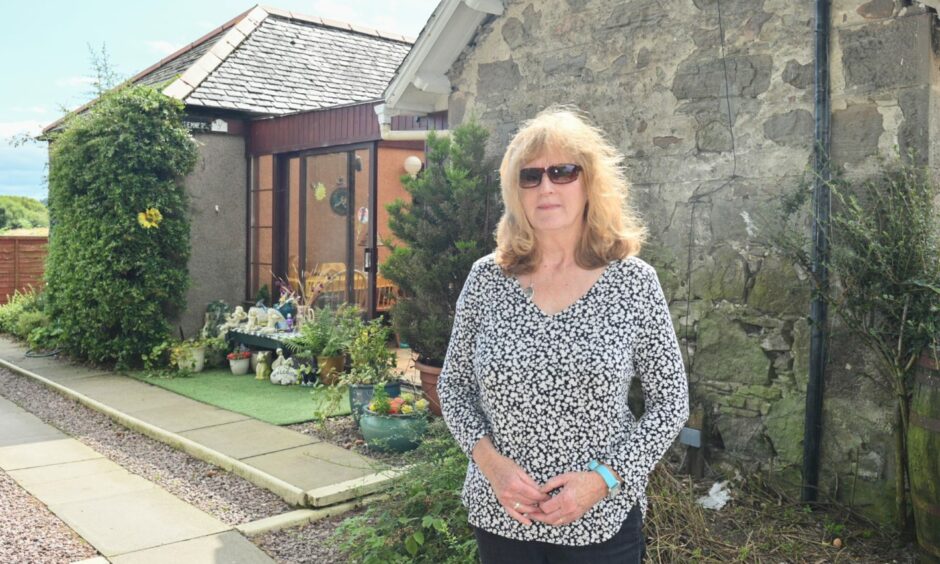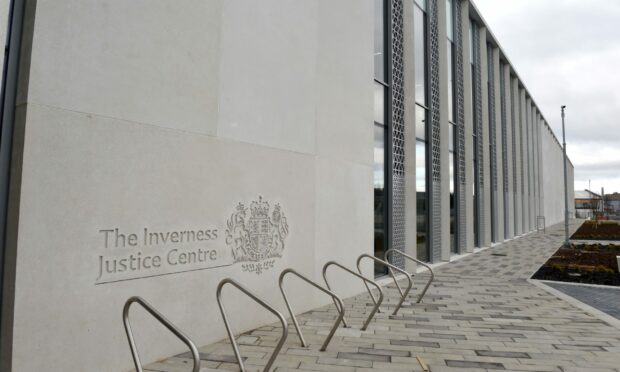Robert and Blan Bremner’s computer is usually unplugged and the one mobile phone they share is rarely used.
But they find it harder to switch off from a wider issue and what many other people feel are the side effects of modern living.
Electricity pylons, satellite signals, wifi, phone and TV masts, smart meters, computers, wind turbines and airport radar systems have all been cited as culprits in causing health issues.
Constant pulsating noise
Mr Bremner, 71, and his wife, 69, have lived in their home at Gollanfield for 40 years.
But they say the last five have been “torture” due to a “constant pulsating noise” which they say they can also feel through their bodies.
They say it has affected their health through disturbed sleep, fatigue, headaches and painful joints.
But Mrs Bremner says she also experiences the noise in other locations, sometimes many miles away.
She said the problem started one night when she thought a neighbour was using an electrical appliance which turned out not to be the case.
“As time went on it was keeping us awake. We were both tired through the day.
“It’s pinging through my body, like a stabbing pain, particularly my neck and ears.
“I’ve a computer I haven’t used for about three years. My husband has an ipad but I don’t like using anything like that now.
“I don’t have a mobile phone, but I take my husband’s if I go out.”
She wants to raise awareness of the issue and hear from others affected.
“We are all now surrounded by modern technology, (including) infrasound from turbines which can travel many miles and can be felt in the human body.
“Also the smart grid used on our power lines for wifi, mobile phones, computers etc.
“These are now in the atmosphere to connect all who use wifi equipment – pulsating frequencies which can damage your health.
“We feel sure it is also affecting those who don’t hear it.”
Identified problem is ‘tip of the iceberg’
Mrs Bremner has been in touch with the charity Electrosensitivity UK (ES-UK). It was set up in 2003 and has grown steadily as growing numbers of people become sensitised to electromagnetic energy.
It is in contact with about 1,000 people which, it says, is the “tip of the iceberg”, with about 4% of the UK said to have some electrosensitivity.
Michael Bevington, chairman of the charity’s trustees, said: “Numbers continue to grow steadily, although it still takes many people a while to realise the cause of their symptoms.
“Increased use of wireless devices, including wifi, increased exposure during lockdown and working from home, with consequent established results, including increased anxiety among some children.”
He said having spoken with Mrs Bremner he believes she and her husband may have electrosensitivity and discussed ways of alleviating symptoms.
These include avoiding radiation, particularly from mobile phones, masts, wifi etc, and using meters to show least harmful areas.
Some sufferers also use military-style silvered nets or protective clothing, to provide shielding.
In June this year, the Scottish Government issued a statement on 5G technology, recognising there could be public concerns about potential health effects relating to exposure to electromagnetic fields (EMFs).
It said the International Commission on Non-Ionizing Radiation Protection (ICNIRP) had concluded that scientific literature provided no evidence of any adverse health effects to exposure below international guidelines.
The World Health Organization has also said that to date no adverse health effect has been causally linked with exposure to wireless technologies.
The UK Health Security Agency continues to monitor health-related evidence applicable to radio waves.
But ES-UK says three studies on the effects of 5G masts showed people had electrosensitivity symptoms near 5G transmitters.
No evidence of noise nuisance
Local councillor Glynis Campbell Sinclair visited the Bremners. She said: “The council has done everything we can to address the situation.
“But unfortunately we were not able to identify a cause.”
A Highland Council spokeswoman added: “Environmental health officers have investigated this complaint but have not witnessed the noise to date or found evidence that would suggest a statutory noise nuisance exists.
“As a consequence, our environmental health service can take no further action at this time or offer any explanation as to possible source of any such noise.
“While electro-magnetic radiation has been suggested as a possible source, this is not something that would fall within the remit of environmental health for investigation.”
Related:
North residents voice health fears over wind turbine noise













Conversation